The 50 States Project is a yearlong series of candid conversations with interior designers, state by state, about how they’ve built their businesses. Today, we’re chatting with Whitefish Bay, Wisconsin–based Jessica Jubelirer about why her firm’s services aren’t always the easiest to market, why business owners must have an appetite for problem-solving, and the financial lessons she learned from launching during the Great Recession.
When did you first know you wanted to be a designer?
Like so many of my peers, it was simply always an interest—as a child, I would beg my mom to take me to the fabric store so that she could sew up a window treatment for me. She was an artist and a renowned quilter, so I grew up around her work and her quilts.
In your childhood, did you see people with interior design or architecture as a profession?
No, I definitely didn’t. It is not as prolific of an industry in Wisconsin as it might be in other places. It only really dawned on me as I entered college that that was the path I should pursue. It was a terrific interest, and it just fell into place. I attended UW Madison in their interior design program.
What was your path to launching your own business?
In college, we had an internship requirement. I was entirely late to the game and totally procrastinated to find an internship, so I had a week to lock one down when I approached a mentor—otherwise I would’ve missed obtaining the credits. He didn’t want an intern, because he always thought that they were a nuisance, but I didn’t really give him a choice. I begged him to let me have two weeks to give it a shot, and if I irritated him and got in the way, I told him that he could send me packing. Of course, he came to love having a schlepper around. That experience brought all the pieces of the puzzle together, and became so obvious once I stepped into that role that that was right for me.
At the end of that summer, they jokingly asked if I would just drop out of college and continue on [with the firm], which I didn’t do—my parents would have wrung me out! But I went to work for him after I graduated.
Did you go from that firm to your own?
I did, yes. I opened my doors in 2008.
How did you know it was the right time?
Well, it was a sad chapter in that my mentor and his business partner [passed away] on a small plane that had an accident. So it wasn’t as much of a choice as a juncture in the road. I was devastated, because he was a tremendous part of my professional life. He was also in the back of my mind—I could hear him saying, “Of course you’ve got to continue on.” I took everything I learned from him and carried him in the back of my mind as I started my firm.
We launched in November of 2008, which was about a month into the Great Recession. Only a 27-year-old optimist would have chosen that time to do it! And in the same way that our grandparents were deeply impacted by growing up in the Great Depression, I was deeply impacted by starting our business at that time—we’ve always remained very pragmatic, level-headed and attentive to the ins and outs of the financial aspects of running a business. My entire team is mindful of not just the creative and fun aspects of interior design, but also the business side, because it’s of equal importance.
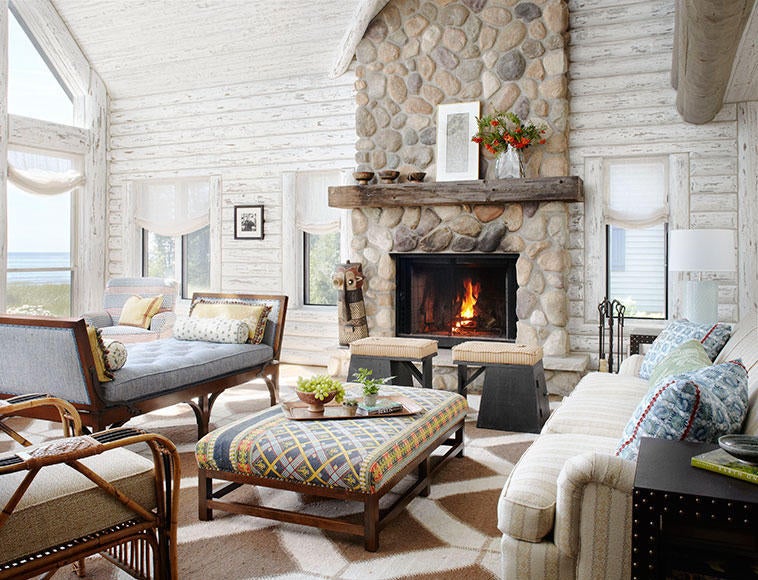
I think about that a lot—how this is such a creative profession, but these are also some of the biggest checks clients will ever write.
It’s entirely true—and for them, it is a leap of faith both that a designer is going to provide a beautiful inspiration for the design of someone’s home, but also that they’re going to be able to deliver. This industry is full of potential pitfalls—from a business like Dessin Fournir going out of business, and retiring craftsmen, [and taking a chance] on this new source in Paris that we know is right but who we don’t have a tried-and-true relationship with. You really need to be adept at maneuvering those pitfalls of the many providers, suppliers and businesses, because it takes such a village to do what we do.
Were you impacted by the Dessin Fournir bankruptcy?
Unfortunately, we were one of their biggest clients in the year of their downfall, so yes. We were hit hard by that, and it was an awful lesson.
How do you navigate something like that?
There’s no easy or short answer to that. You do your best, protect your clients—and sometimes, unfortunately, you take a hit. Clients are understanding, but at the end of the day, it’s kind of not their problem. It’s my problem. There are good days and bad days, but that was one for the books.
When you are looking at creating a new relationship with a supplier or trying out a new resource, how do you test the water?
Judgment. And guts. Every single time.
Word of mouth is important, or looking at a company’s completed work. But then, as with so much of this business, you have to make your best judgment, get on with it and see what happens—in order to navigate this business, you need to have a very strong compass; you have to know when it’s worth it to take the risk with a new supplier and when it’s an unmitigated disaster in the making. And above all, it requires a sense of humor.
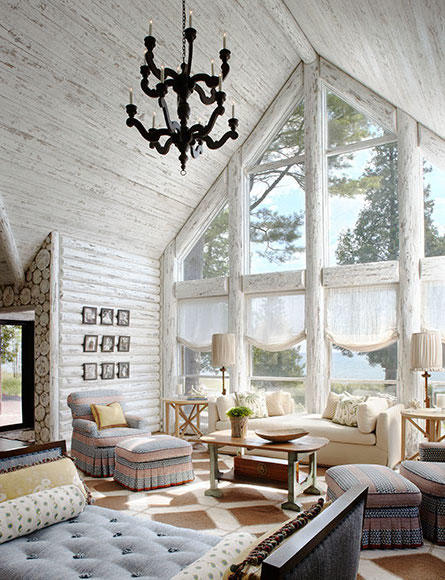
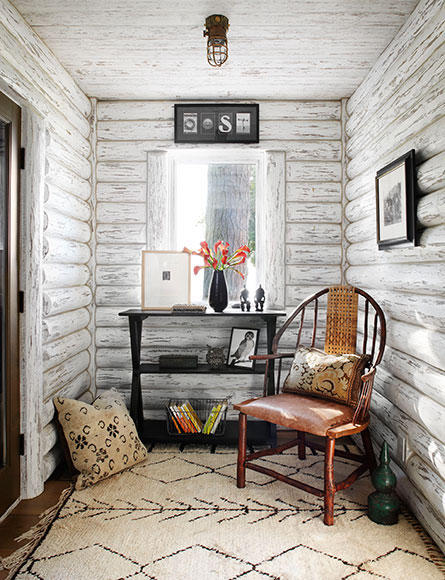
What did your firm look like in the early days?
Remarkably, we started out with five employees—we ran out of the gate at a clip. They believed in me as a person, which I think was important. They believed in my strong determination to succeed, and in my commitment to do amazing work that would make us all proud.
We have been, at our largest, about 10 employees. It’s ranged from six or seven to 10, which is definitely a large firm for our area. I wonder out loud every day how we do it! It’s very uncommon—I will say that—but also, I don’t know how you do it otherwise. I know there are designers who do their own accounting—but I’m not an accountant, you know what I mean?
One thing I’ve heard from designers whose firms grew over time is that there’s a moment where they switched to feeling like they are more of a manager rather than a designer. Do you feel that pull ever?
I will never relinquish being hands-on, that is for sure, but I think the makeup of the team has a lot to do with [my ability to do] that. We are no-drama and no-nonsense. Of course management comes with it—there’s no way around that—but I know we’re doing well when I’m managing workflow rather than administrative tasks. The management that we tend to do pertains to the unavoidable things that must be navigated in terms of a physical office and the accounting process, but not so much management of HR.
Have there been moments where it didn’t feel as good as it does now?
Oh, we’ve had the worst moments and the most hideous disasters. But we’ve also become a magnet for consummate professionals who don’t want anything except to be a part of doing incredible work. That’s the moment we [currently] find ourselves in, which goes back to having fun and creating beautiful work. It makes it fun to have an amazing, committed team. It makes it fun to have incredible clients who let us do what we do. That’s what makes it fun to climb those awful mountains of challenges in order to create incredible results. I see shuffling and reshuffling priorities or client needs as one type of management, but interoffice bickering is not a thing that we have, or that I would accept, so I don’t spend my time managing our team in that fashion.
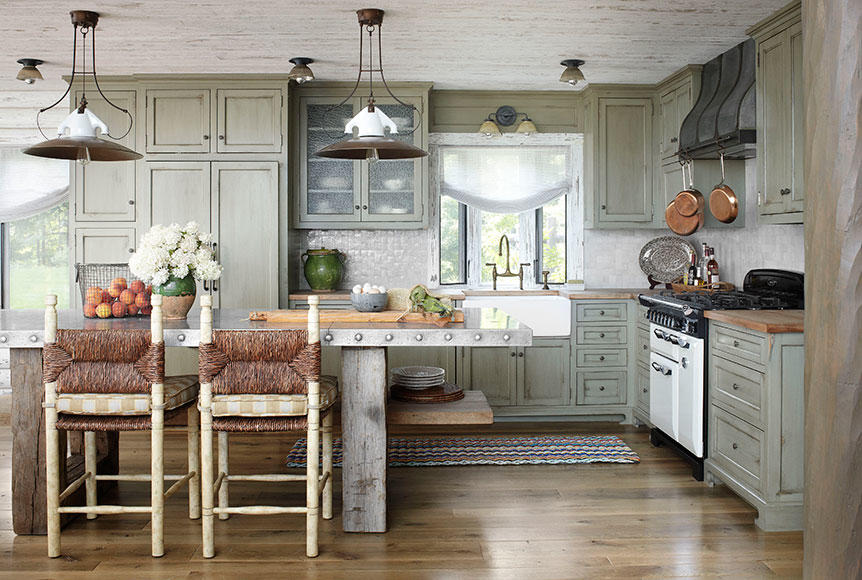
Are you able to be hands-on with each project, or where do you see your role in guiding each client relationship?
My team would roll their eyes at that question because they would dream of the day when I was more hands-off instead of firing off 10 million questions and directives or endless feedback loops. But that is how I do what I do. By the same token, though, I am thrilled to let great people do what they do. For me, it’s simply a matter of being involved in every last detail; that’s what my clients count on—knowing that everything we do is reflective of the values that I uphold. That is why they’ve chosen us.
On a day-to-day basis, I am definitely a perfectionist-in-chief, and work hand in hand with all of our clients. Then I’ve got this wonderful team to help me execute. Our clients are always blown away by the level of expertise that our entire team brings, and in no time flat they have a level of comfort because they understand that our team members are my trusted collaborators. They know that my finger’s on everything, and that our team members are an extension of me.
How do you break down responsibilities among your team, what are the roles?
The design team that consists of me, an architectural designer, and then associate designers. Then we have our administrator, who does everything from accounting to purchasing to assisting the design team with the execution. As with every small business, all of them wear many hats.
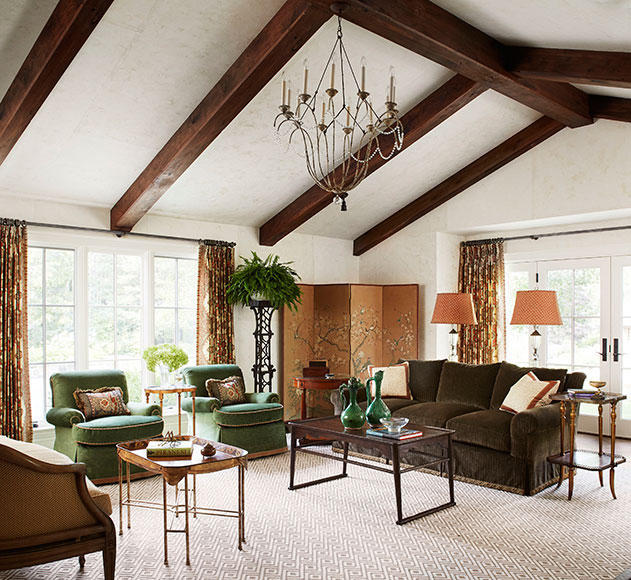
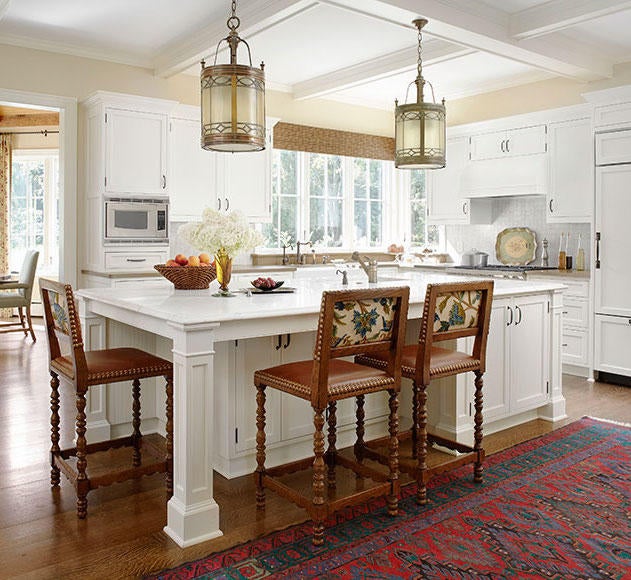
From the moment that someone reaches out to work with the firm, what is the client journey?
We work with a lot of repeat clients, so oftentimes it’s just picking up where we left off, whether it’s a new house or the continuation of an existing project. A lot of our clients really are like our extended family. That said, there’s really no one-size-fits-all as far as progress; we have a conversation about our objectives, followed by a design meeting with samples strewn about—and flying through the air when they’re rejected.
That’s an amazing visual!
Our studio is just awash in beautiful things, and to an unacquainted eye it can look like mayhem. But for those on the team, they’ll look at a certain pile and know exactly who it’s for because all of our work is individualized to reflect our clients. No two homes look alike—it is a hallmark of our work that each home becomes reflective of each family. That goes for the pace, the process, and even the execution.
You’re willing to sort of customize your systems for each client, to some extent?
Absolutely. There’s always a string that has to run through for the actual execution. But whether it’s the pace, the scope or the approach, we tailor it to the circumstances.
When a new client reaches out, how do you decide what to say yes to or what’s the right fit for the firm?
Well, first and foremost, it’s got to be fun, for everyone. Otherwise, it’s just not worth doing. The decorating business is challenging enough, so a respect for what we do and what we bring to the table is really important. Our clients come to understand what it takes to do custom design—there’s nothing easy about it. It’s very much like sausage-making: the result is hopefully very tasty, but the process can just be one pie in the face after another, as one of my teammates says. Even though we paddle under the water furiously for our clients so that they only see the pretty, sometimes unmitigated challenges rise to the surface. It is a journey, and patience and a degree of perspective is important.
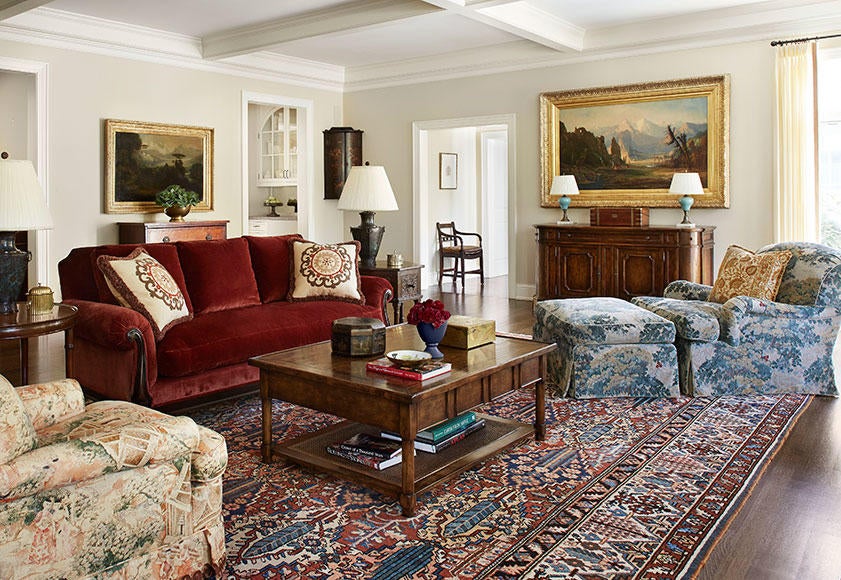
You mentioned that each project is really tailored to the client. Is that a selling point, or has it been a challenge to market what you do with that level of aesthetic fluidity?
It’s always a draw for our clients. I mean, I respect that there are designers who can churn out the same thing, but people come to us because they desire quality craftsmanship and a reflection of their taste. They know that I will give them the best of the best, and that it’s harder and more time-consuming to do that. It is certainly less marketable, but I feel like it’s more lasting as a result. I wouldn’t want to walk around on the street looking like a carbon copy of someone else; my clients don’t want to walk into someone’s home and see the same thing that they’ve seen in a million places. You might as well just not try then.
That must challenge you and your team to source creatively, constantly. How do you shop and what resources do you tap into?
Anything and everything. I think the art of it is at the heart of what burns inside of me—to do something that we’ve never done before; to take inspiration, turn it inside out in my imagination, and create something new that simply blows away our clients. One of the perils—but also one of the little rays of light—of the internet is that there’s no end to the inspiration or the sources. I love to discover craftspeople with businesses that have been in their families for 150 years—you can find them anywhere you look, but you might not have been able to if it weren’t for the new technology.
The internet has also really shaped the way people think about what things should cost. Have the conversations you’ve had with clients about money changed in the last decade or so?
Well, of course. Younger generations don’t have experience, which is why the process is very much an education for first-timers. We know we [may need to] foster dialogues [to help them] understand what we do, how we do it, that it isn’t as simple as it appears, and that it requires long-lasting commitment from myself and my team. While we’re happy to do that, it takes the right person to be a professional client—to understand that this is what we do every day, and that our expertise and understanding of costs and budgets is as important as understanding the dimensions of a sofa. While I’d love to just talk about sofas and window treatments all day every day, that’s only the artistic side of things; the dollars and cents is what it takes to execute these incredible, one-of-a-kind visions. Being able to have those conversations in a mutually professional way is imperative.
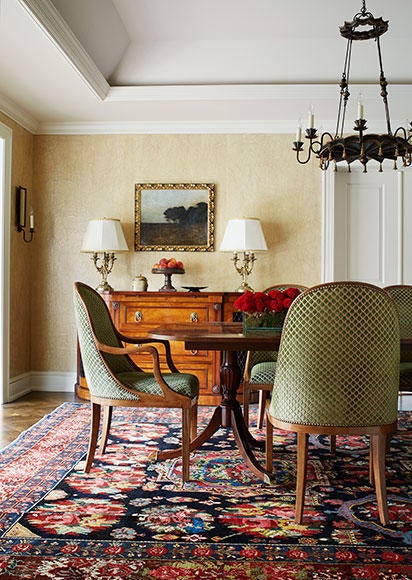
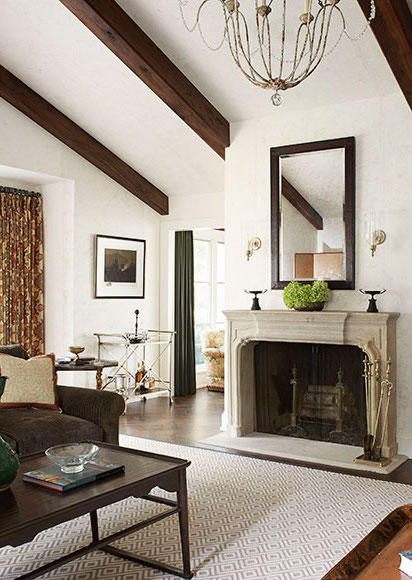
Is the misunderstanding, or the education piece, about what those custom pieces cost or what your times costs?
It’s more about what quality costs. If you’re ordering one made-to-order light fixture customized to the dimensions and finish that you like, and it takes 14 weeks, that is very different than pointing and clicking to order something that was produced 5,000 at a time in China and shipped over.
More zeros on the invoice, too, I would imagine.
Yeah. It’s a different alignment of expectations. More and more, I think that if people come to us for the qualities that we’re known for—quality and craftsmanship and artistry above all—then the understanding of what it takes to execute that comes with the territory.
What are some of the unique aspects of being based in Wisconsin? You mentioned earlier that design may not be as widely regarded or understood.
Well, I would say that homes in Wisconsin are probably bigger than studio apartments in New York, that’s for sure! We have more square footage to address, but also housing prices are lower. In general, the clients we work with are willing to invest in quality and do things right. Whether that’s a multigenerational lake home or a fabulous family home, they want something they can be proud of for the long term. People are also perhaps a little bit more willing to undertake projects that take longer to create and can be enjoyed for a longer time, because it’s a little bit less fluid in terms of movement in and movement out of our area.
I think people here are on one hand very level-headed, pragmatic and function-driven; they really appreciate quality and craftsmanship. On the other hand, they are thrilled to bring some of their travels and experiences into their home. They’re more willing to create special oases in their homes.
Is there much of a design community nearby?
There is, to some extent, though certainly not as much as in other markets. I think that we’ve created a beautiful community inside of our firm, and beyond that, with the incredible craftspeople that we work with. Our firm operates at a level that is consistent with some of the best of the best on each coast—and I mean that in a humble way. We work with manufacturers in New York and California, and all over the world. By extension, our design community is unlimited.
But it’s not necessarily the designer down the street that’s a peer?
Exactly. Down the street can be in Paris. They’re one phone call or email away. It’d certainly be fun to be able to [connect with a local design community], but it just comes with the territory.
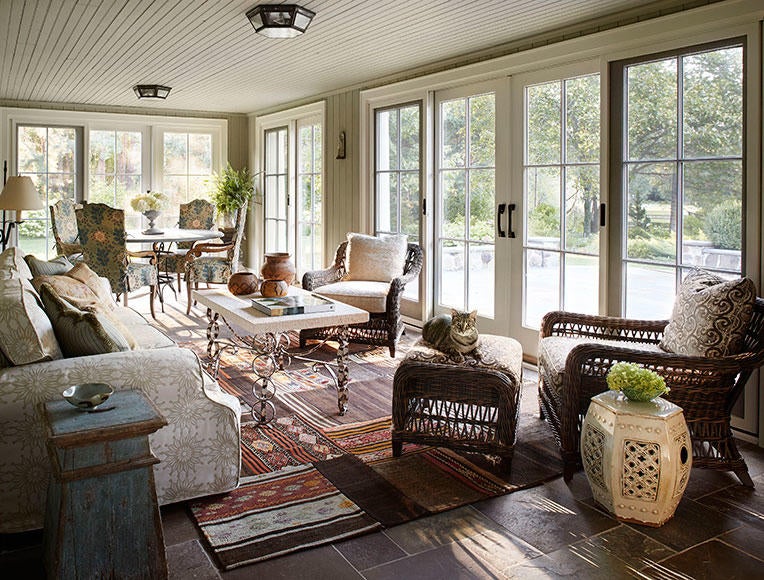
From a business side, what’s the next big-picture thing on your to-do list for 2021?
Keep doing great work. It’s so boring, I know, but at the end of the day, that’s the score.
How has COVID shaped the day-to-day realities of your firm?
There are certainly more opportunities now that clients are spending more time in their homes, but also a whole new set of challenges with supply chains—head-banging moments and then relief when things come together. Our clients are all realistic people who understand what it takes, but that doesn’t mean they’re not eager to complete what they set out to do. More than anything, we are grateful to be able to continue our work—this is obviously an unmitigated public health disaster, and if we have problems on our end, we’re wise enough to understand that the additional challenges of these COVID days are nothing in terms of what others are facing. We try to keep perspective.
Did COVID shift the balance of projects in your pipeline?
Sure. We’re tackling things that always were out there, but that for whatever reason never got done before—things that seem more important now, when a client is at home staring at a corner of the room we’ve never completed and they want to just get it done.
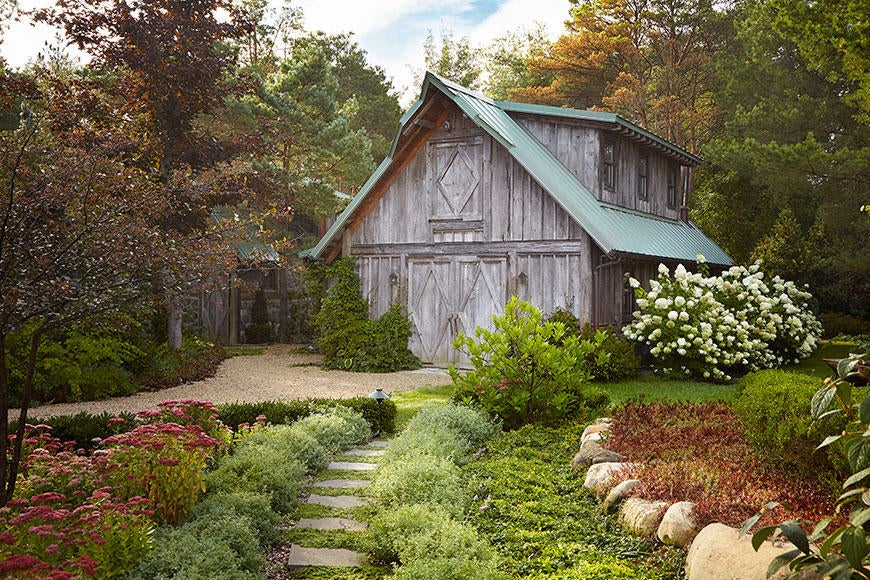
You’re working at the extremely high end of the spectrum, but amid a lot of Midwestern practicality. How does that shape the work that comes in?
Absolutely. That’s where it comes to fit. There aren’t 500 clients that want that. Maybe there’s five.
How do you tailor a business model to that?
Luckily clients have primarily found us. We are fortunate to have a reputation that speaks for itself—not to say that it’s easy or that there is an excessive amount of clients wanting to embark on the level of artistry that we do. And being published certainly doesn’t hurt! That’s been a validation of the beautiful work that we do, and the level of quality that our clients demand, and is certainly something that we should spend more time pursuing. There’s never enough time in the day, but being able to focus on more for us is always on my wish list.
It is all about achieving a balance—what is right today will not be right next month, so it’s a matter of adaptation and doing our damnedest to keep it real. In some ways, this work can be really punishing sometimes, I think. It can be like going through a meat grinder every single day, and then choosing to do it again the next day. It takes an overriding sense of humor and some defective gene to make you want to continue at it. It’s like giving birth—with every room or space or house we create, you forget the pain and you just remember the high of seeing your beautiful baby. Somehow, you forget how hideous it was to accomplish and you can’t wait to do it again.
To learn more about Jessica Jubelirer, visit her website or find her on Instagram.





























